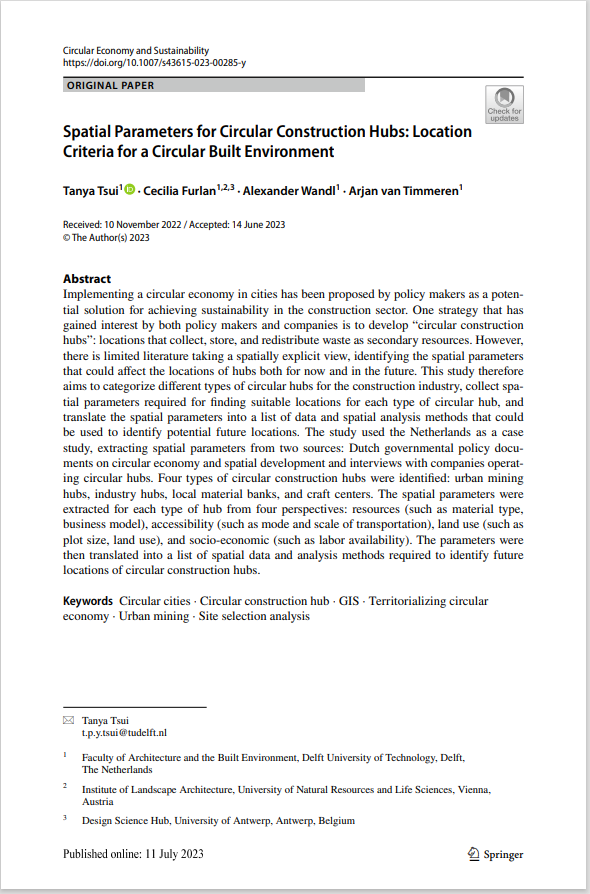Abstract
Implementing a circular economy in cities has been proposed by policy makers as a potential solution for achieving sustainability in the construction sector. One strategy that has gained interest by both policy makers and companies is to develop “circular construction hubs”: locations that collect, store, and redistribute waste as secondary resources. However, there is limited literature taking a spatially explicit view, identifying the spatial parameters that could affect the locations of hubs both for now and in the future. This study therefore aims to categorize different types of circular hubs for the construction industry, collect spatial parameters required for finding suitable locations for each type of circular hub, and translate the spatial parameters into a list of data and spatial analysis methods that could be used to identify potential future locations. The study used the Netherlands as a case study, extracting spatial parameters from two sources: Dutch governmental policy documents on circular economy and spatial development and interviews with companies operating circular hubs. Four types of circular construction hubs were identified: urban mining hubs, industry hubs, local material banks, and craft centers. The spatial parameters were extracted for each type of hub from four perspectives: resources (such as material type, business model), accessibility (such as mode and scale of transportation), land use (such as plot size, land use), and socio-economic (such as labor availability). The parameters were then translated into a list of spatial data and analysis methods required to identify future locations of circular construction hubs.
Keywords: circular cities, circular construction hub, GIS, territorializing circular economy, urban mining, site selection analysis
Cite as: Tsui, T., Furlan, C., Wandl, A. et al. Spatial Parameters for Circular Construction Hubs: Location Criteria for a Circular Built Environment. Circ.Econ.Sust. (2023). https://doi.org/10.1007/s43615-023-00285-y
